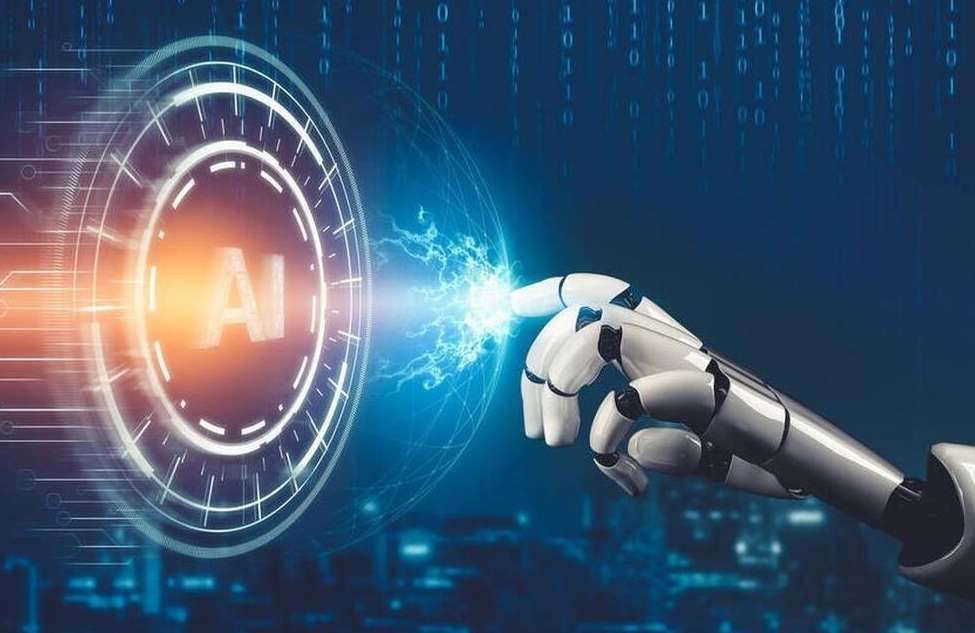Is the AI Investment Frenzy Repeating History?
Advertisements
Twenty-five years ago,the internet bubble peaked before crashing into a prolonged bear market that dragged the U.S.economy into recession.Today,amid a global frenzy over artificial intelligence (AI) investments,one might ponder whether we are witnessing a repeat of history.
At the turn of the millennium,the Dow Jones Industrial Average hit its high in January,followed closely by the S&P 500 and the Nasdaq composite index reaching new peaks just two months later.During this period,a significant and prophetic article was published by international media on March 20,2000,highlighting the crisis faced by numerous internet startups.These companies,driven by “irrational exuberance,” were quickly burning through capital only to collapse one after another,taking vast sums of investor money down with them.
James Grant,a noted financial writer,discussed the phenomenon in his latest edition of Grant's Interest Rate Observer,noting how during the 1998-2002 internet bubble,excessive enthusiasm among tech companies led to over-purchasing and over-construction,culminating in a disastrous market meltdown.Strikingly,a similar pattern appears to be unfolding in the burgeoning AI domain today.
Currently,tech giants worldwide are investing hundreds of billions into AI.Reports indicate that companies such as Meta,Microsoft,and Alphabet,Google's parent company,plan to allocate around $200 billion to AI research and development in 2024 alone,an amount equating to about a quarter of their annual revenues.However,there are claims that Chinese AI firm DeepSeek can develop AI models at a cost significantly lower than that of American tech firms,raising questions about whether the immense financial commitments made by U.S.companies would yield proportional returns.
Moreover,the U.S.government is pushing vigorously for the development of AI infrastructure.The previous presidential administration encouraged the Department of Defense and the Department of Energy to lease federal land to expedite the creation of data centers.The current administration has followed suit with initiatives like the “Stargate Project,” collaborating with corporations such as SoftBank,OpenAI,and Oracle,with investments projected between $100 billion and $500 billion.Additionally,since the start of 2023,the total energy demand for new data center projects announced by the U.S.matches the output of 94 nuclear reactors.The fervor of these investment activities raises concerns about a potential new tech bubble.
This year marks the 25th anniversary of the merger between AOL and Time Warner,valued at $164 billion,a deal once hailed as the apex of the internet bubble and later recognized as one of the most destructive events of shareholder value in business history.
Against this backdrop,Tesla's CEO Elon Musk made headlines recently with a $97.4 billion acquisition proposal for OpenAI.When juxtaposed with SoftBank's initiative to invest $40 billion in OpenAI,this bid indicates that OpenAI's potential valuation could soar to $300 billion.Analysts from Grant’s team underscore that historically,peaks in industry booms are often accompanied by enormous merger and acquisition transactions,suggesting we might be nearing the end of the current AI investment cycle.
Reflecting on the past,the radio industry of the 1920s serves as a classic example of a tech investment bubble.The stock of Radio Corporation of America surged by an astonishing 200 times during the 1920s,only to plummet by 98% following the stock market crash of 1929.Although broadcasting technology eventually achieved significant success, its early investors suffered monumental losses for decades afterward.
its early investors suffered monumental losses for decades afterward.
A parallel can be drawn between that historical bubble and today's AI investment surge.AI technology indeed has the potential to bring about substantial long-term productivity transformation,yet the current market valuations,influx of capital,and governmental intervention bear striking similarities to previous bubble eras.
During the 2000 tech bubble burst,U.S.federal finances were still in surplus.In stark contrast,the current fiscal landscape has taken a hit due to two Middle Eastern wars,the financial crisis of 2007-2009,the COVID-19 pandemic,and escalating healthcare expenditures,leading to a ballooning deficit.According to forecasts from the Congressional Budget Office (CBO),the U.S.federal deficit is projected to average around $2 trillion per year over the next decade,which is approximately 6.2% of GDP.
This burgeoning deficit implies that funding for the future AI sector will have to compete with the U.S.government's monstrous debt financing requirements.The CBO estimates that interest payments alone will constitute 3.2% of GDP,surpassing the government's primary fiscal deficit of 3.0%.Should capital markets face a surge in government bond supply,the high financing demands of the AI sector may encounter severe challenges.
Despite differing historical contexts,the cyclical rise and fall of tech investments appear to repeat over time.From the radio bubble of the 1920s,through the internet bubble of 2000,and into today’s AI investment frenzy,market speculation remains a constant thread.As James Grant eloquently puts it,the cyclical prosperity and downturns in the tech industry often echo throughout history in a relentless pattern.
As we mark the 25th anniversary of the internet bubble,perhaps it is time for investors to contemplate cautiously: Is the current AI investment boom the dawn of a technological revolution,or merely a precursor to yet another bubble bursting?The answer may significantly shape the financial landscape of the coming years.
Categories
Latest Post
- Gold's Downtrend Persists Despite Adjustments
- EU's AI Push: Opportunities and Challenges
- Challenges in the AI Chip Industry
- U.S. Government Takes Action Against Google
- Tech Giants Battle for AI Chip Dominance
- The 4% Dollar Time Deposit is About to Expire
- Apple and Alibaba Forge AI Alliance
- Divergence in Tech Stocks Intensifies
- U.S. Stocks Surge Back
- Quantum Technology's IPO: Potential and Challenges